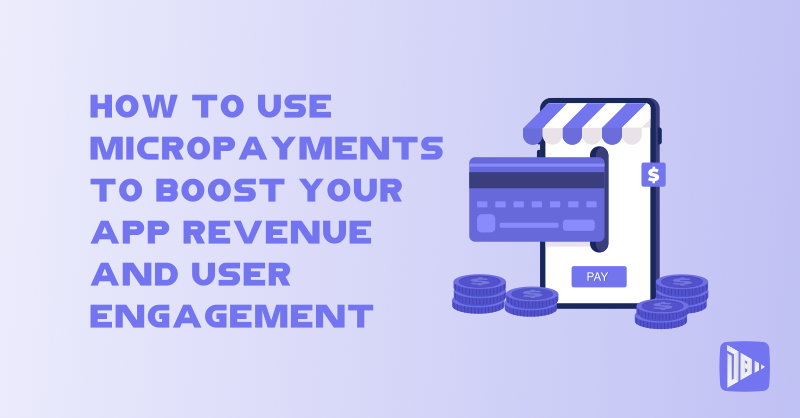How to Use Micropayments to Boost Your App Revenue and User Engagement

[read_meter]
Micropayments are small transactions that typically range from a few cents to a few dollars. They are often used to purchase digital goods or services, such as premium content, in-app features, or online subscriptions.
But did you know that micropayments can also be a powerful tool to boost your app revenue and user engagement? In this blog post, we will show you how to use micropayments to create a win-win situation for both you and your users.
Benefits of Micropayments for App Developers
Micropayments can help you increase your app revenue in several ways:
- Expand your customer base: Micropayments lower the barrier to entry for your app, as they allow users to pay only for what they need or want, rather than committing to a large upfront fee or a recurring subscription. This can attract more users who are willing to try your app and spend money on it.
- Increase your conversion rate: Micropayments can also increase your conversion rate, as they reduce the friction and hesitation that users may have when making a purchase. By offering users a simple and convenient way to pay, you can increase the likelihood that they will complete the transaction and become paying customers.
- Enhance your customer loyalty: Micropayments can also enhance your customer loyalty, as they create a sense of value and satisfaction for your users. By providing users with quality content or features that they can pay for as they go, you can increase their engagement and retention, as well as their willingness to spend more on your app.
Benefits of Micropayments for App Users
Micropayments can also benefit your app users in several ways:
- Save money: Micropayments can help users save money, as they allow them to pay only for what they use or consume, rather than paying for things they don’t need or want. This can also prevent users from wasting money on unused subscriptions or features that they forget to cancel.
- Control spending: Micropayments can also help users control their spending, as they give them more flexibility and transparency over their purchases. Users can decide how much they want to spend on your app, and see exactly where their money is going.
- Enjoy variety: Micropayments can also help users enjoy more variety, as they enable them to access a wider range of content or features on your app. Users can explore different options and discover new things that they may like, without having to commit to a single choice.
How to Implement Micropayments in Your App
There are different ways to implement micropayments in your app, depending on your app’s nature and goals. Here are some common examples of micropayment models that you can use:
- Pay-per-use: This model allows users to pay for each unit of consumption, such as a video, an article, a song, or a game level. This model is suitable for apps that offer a large and diverse catalog of content or features that users can choose from.
- Pay-per-access: This model allows users to pay for a limited or temporary access to a certain content or feature, such as a premium article, a live event, or a special offer. This model is suitable for apps that offer exclusive or time-sensitive content or features that users may want to access occasionally or for a short period of time.
- Pay-per-upgrade: This model allows users to pay for an upgrade or enhancement of a certain content or feature, such as a higher resolution, a faster speed, or a better quality. This model is suitable for apps that offer basic or standard content or features that users may want to improve or customize.
How to Optimize Micropayments for Your App
To optimize micropayments for your app, you need to consider several factors, such as:
- Pricing: You need to set the right price for your micropayments, based on the value and demand of your content or features, as well as the willingness and ability of your users to pay. You also need to test and adjust your pricing strategy, based on the feedback and behavior of your users.
- Payment method: You need to provide a convenient and secure payment method for your users, such as a credit card, a digital wallet, or a mobile carrier billing. You also need to minimize the steps and hassle involved in the payment process, such as by using a one-click or a one-tap payment option.
- User experience: You need to design a user-friendly and engaging user experience for your micropayments, such as by using clear and attractive visuals, sounds, and animations. You also need to communicate the value and benefits of your content or features, as well as the terms and conditions of your micropayments, to your users.
Conclusion
Micropayments are a great way to boost your app revenue and user engagement, as they create a win-win situation for both you and your users. By using micropayments, you can expand your customer base, increase your conversion rate, and enhance your customer loyalty. At the same time, you can help your users save money, control their spending, and enjoy more variety.
If you want to learn more about how to use micropayments to grow your app, visit our community at droidbtye.com/community, where we offer expert advice and solutions for app development and monetization.
– DroidByte Team 🤖
Your Advertisement Here
Learn More